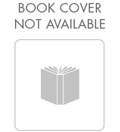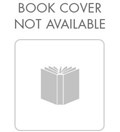Narrow Results By
Streams of consequence : dispatches from the conservation world
https://archives.whyte.org/en/permalink/catalogue26207
- Medium
- Library - Book (including soft-cover and pamphlets)
- Published Date
- 2023
- Author
- Fitch, Lorne
- Publisher
- Victoria, BC : Rocky Mountain Books
- Call Number
- 04 F55s
- Author
- Fitch, Lorne
- Publisher
- Victoria, BC : Rocky Mountain Books
- Published Date
- 2023
- Physical Description
- 217 pages ; 19 cm
- Abstract
- A collection of essays highlighting the splendour and diversity of the landscape of southern Alberta. Streams of Consequence weaves together a bit of “ecology for dummies,” a cross-section of stories and essays on Alberta’s biodiversity riches and treasured landscapes, and a backdrop of selections on conservation issues. These are stories of the land and of Alberta’s plants, fish, and wildlife told through the voice of a biologist with decades of experience on the front lines of conservation efforts. Through stories, metaphor, and allegory, basic ecological principles are made clear, ecosystems are described, and our human role in stewarding these natural treasures is revealed. Infused in these “dispatches from the conservation world” is the special magic of biology, taking mute organisms at a variety of scales and understanding their lives and habitats so that they have meaning and a connection to us. The role, the unstated objective of biologists, is to remind us, unceasingly, that it is only in our minds that we live apart from the natural world. These stories have power to engage and educate, to help create and sustain an ecologically literate constituency that knows and cares about Alberta’s wilder side. Readers can look back on the changes, weigh their significance, and think about where we came from, where we are today, and where the trend might take us if we choose one road or another. There are some rocks heaved at our economy-centred, consumer-driven world. Scattered between them are the acts of altruism, of caring, of forethought, and of stewardship. These are rays of hope amid dark clouds threatening our very existence. -- From publisher
- ISBN
- 9781771606691
- Accession Number
- P2023.25
- Call Number
- 04 F55s
- Collection
- Archives Library
This material is presented as originally created; it may contain outdated cultural descriptions and
potentially offensive content.
Read more.
Hope matters : why changing the way we think is critical to solving the environmental crisis
https://archives.whyte.org/en/permalink/catalogue25274
- Medium
- Library - Book (including soft-cover and pamphlets)
- Published Date
- 2020
- Author
- Kelsey, Elin
- Publisher
- Vancouver ; Berkeley : Greystone Books
- Call Number
- 04 K27h
1 website
- Author
- Kelsey, Elin
- Responsibility
- Elin Kelsey
- Publisher
- Vancouver ; Berkeley : Greystone Books
- Published Date
- 2020
- Physical Description
- 229 pages
- Subjects
- Environment
- Conservation
- Climate change
- Abstract
- We are at an inflection point: today, more people than ever before recognize that climate change and biodiversity loss are urgent and existential threats. Yet constant reports of climate doom are fueling an epidemic of eco-anxiety, leaving many of us feeling hopeless and powerless—and hampering our ability to address the very real challenges we face. Hope Matters boldly breaks through the narrative of doom and gloom that has overtaken conversations about our future to show why hope, not fear, is our most powerful tool for tackling the planetary crisis. Award-winning author, scholar, and educator Elin Kelsey reveals the collateral damage of despair—from young people who honestly believe they have no future to the link between climate anxiety and hyper-consumerism—and argues that the catastrophic environmental news that dominates the media tells only part of the story. She describes effective campaigns to support ocean conservation, species resilience, and rewilding, demonstrating how digital conservation is helping scientists target specific problems with impressive results. And she shows how we can build on these positive trends and harness all our emotions about the changing environment—anger and sadness as well as hope—into effective personal and political action. Timely, evidence-based, and persuasive, Hope Matters is an argument for the place of hope in our lives and a celebration of the turn toward solutions in the face of the environmental crisis. (from publisher's website)
- Contents
- The power of expectation and belief -- The collateral damage of doom and gloom -- Hope is contagious -- Stories change -- The age of personalization -- We are not the only ones actively responding -- The strength of empathy, kindness, and compassion -- Trending hopeful.
- Notes
- Published in Partnership with the David Suzuki Institute.
- ISBN
- 9781771647779
- Accession Number
- P2020.07
- Call Number
- 04 K27h
- Collection
- Archives Library
- URL Notes
- Publisher's website
Websites
This material is presented as originally created; it may contain outdated cultural descriptions and
potentially offensive content.
Read more.
Organizing nature : turning Canada's ecosystems into resources
https://archives.whyte.org/en/permalink/catalogue26201
- Medium
- Library - Book (including soft-cover and pamphlets)
- Published Date
- 2023
- Author
- Biro, Andrew and Cohen, Alice
- Publisher
- Toronto ; Buffalo ; London : University of Toronto Press
- Call Number
- 04 B53o
- Publisher
- Toronto ; Buffalo ; London : University of Toronto Press
- Published Date
- 2023
- Physical Description
- xviii, 264 pages : illustrations, maps ; 24 cm
- Abstract
- Organizing Nature explores how the environment is organized in Canada's resource-dependent economy. The book examines how particular ecosystem components come to be understood as natural resources and how these resources in turn are used to organize life in Canada. In tracing transitions from "ecosystem component" to "resource," this book weaves together the roles that commodification, Indigenous dispossession, and especially a false nature-society binary play in facilitating the conceptual and material construction of resources. Alice Cohen and Andrew Biro present an alternative to this false nature-society binary: one that sees Canadians and their environments in a constant process of making and remaking each other. Through a series of case studies focused on specific resources--fish, forests, carbon, water, land, and life--the book explores six channels through which this remaking occurs: governments, communities, built environments, culture and ideas, economies, and bodies and identities. Ultimately, Organizing Nature encourages readers to think critically about what is at stake when Canadians (re)produce myths about the false separation between Canadian peoples and their environments."-- Provided by publisher.
- Contents
- 1. Introduction -- 1.1 From How to Why -- 1.2 From Ecosystem Components to Resources -- 1.3 Politics beyond Policy -- 1.4 Resourcification through Six Channels -- 1.5 Book Outline and Common Themes -- 2. Channels: From Ecosystem Components to Resources -- 2.1 Introduction -- 2.2 Governments -- 2.3 Communities -- 2.4 Built Environments -- 2.5 Culture and Ideas -- 2.6 Economies -- 2.7 Bodies and Identities -- 2.8 Summary and Conclusions -- 3. From Fish to Fisheries -- 3.1 Introduction -- 3.2 Salmon in British Columbia -- 3.3 Cod in Newfoundland and Labrador -- 3.4 Channels in Action: Organizing Fisheries -- 3.5 Summary and Conclusions -- 4. From Forests to Timber -- 4.1 Introduction -- 4.2 Growth of Timber: Saint John, New Brunswick -- 4.3 Trees, Not Timber: Port Renfrew, British Columbia, and Darkwoods -- 4.4 Channels in Action: Organizing Forests -- 4.5 Summary and Conclusions -- 5. From Carbon to Energy -- 5.1 Introduction -- 5.2 Coal in Nova Scotia -- 5.3 Oil and Bitumen in Alberta -- 5.4 Natural Gas and Fracking -- 5.5 Channels in Action: Organizing Carbon -- 5.6 Summary and Conclusions -- 6. From H2O to Water -- 6.1 Introduction -- 6.2 Diversions and Damming -- 6.2.1 Diversion -- 6.2.2 Damming -- 6.3 Drinking Water -- 6.3.1 Vancouver, 2006 -- 6.3.2 Walkerton, Ontario, 2000 -- 6.3.3 Asubpeechoseewagong Netum Anishinabek-Grassy Narrows, Ontario, 1962-? -- 6.3.4 Drinking Water: Summary -- 6.4 Channels in Action: Organizing Water -- 6.5 Summary and Conclusions -- 7. From Land to Property -- 7.1 Introduction -- 7.2 Soil -- 7.3 Symbol -- 7.4 Space -- 7.5 Channels in Action: Organizing Land -- 7.6 Summary and Conclusions -- 8. From Bodies to Life -- 8.1 Introduction -- 8.2 Wild(?)life: Non-Human Animals -- 8.2.1 Pets and Other Companion Species -- 8.2.2 Fish and Game: Wildness as Economic Resource -- 8.2.3 Parks as Spaces for Wildlife -- 8.3 Human Resources -- 8.3.1 Blood and Plasma -- 8.3.2 Surrogacy -- 8.4 The Channels in Action: Organizing Life -- 8.5 Summary and Conclusions -- 9. Resources: Organized and Organizers -- 9.1 Channels in Action -- 9.2 Common Themes -- 9.2.1 Commodification -- 9.2.2 Indigenous Dispossession -- 9.2.3 Artificial Nature-Society Binary -- 9.3 Why Does 'Resource Thinking' Matter? -- 9.3.1 Winning and Losing -- 9.3.2 Why Is It Important to Think beyond Policy?
- ISBN
- 9781487594848
- Accession Number
- P2023.22
- Call Number
- 04 B53o
- Collection
- Archives Library
This material is presented as originally created; it may contain outdated cultural descriptions and
potentially offensive content.
Read more.



